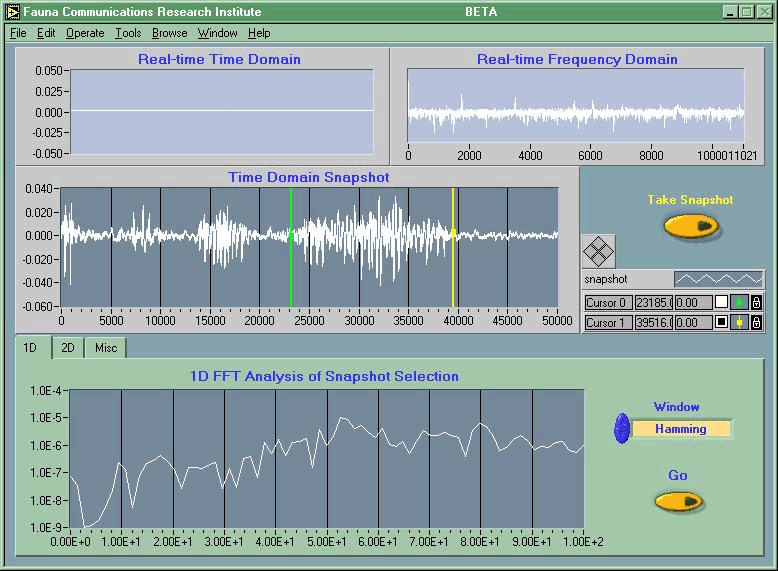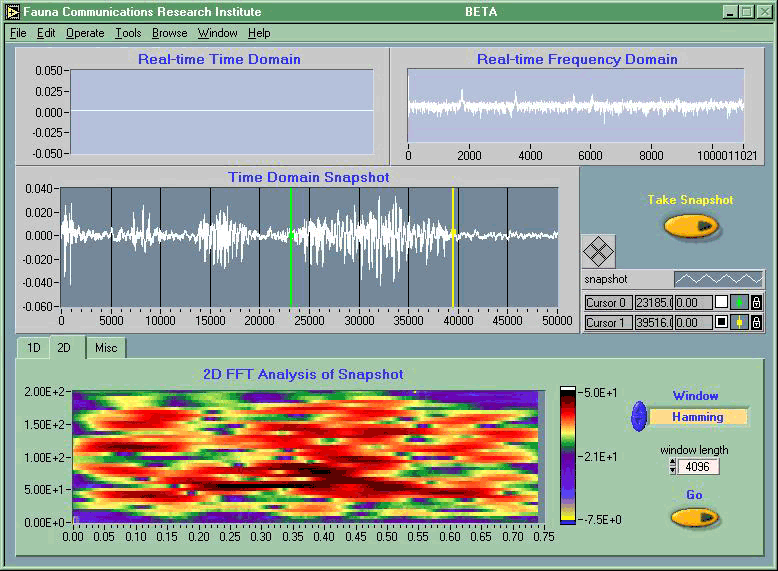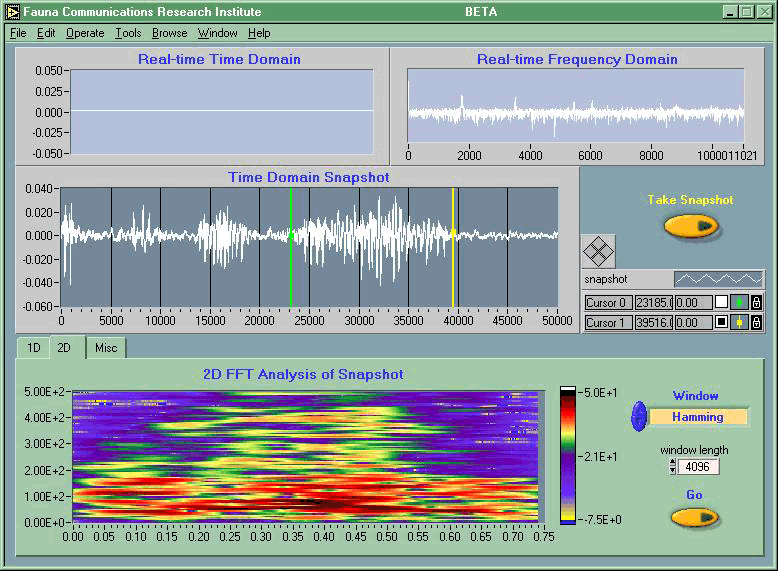Elizabeth von Muggenthaler - 919-732-1322, fauna@rtpnc.net
Fauna Communications Research Institute
North Carolina
Popular version of paper 3aABb1
Presented Wednesday Morning, December 6, 2000
ASA/NOISE-CON 2000 Meeting, Newport Beach, CA
The magnificent noble tiger, revered throughout human history, is now endangered. Once broadly distributed over most of the continent of Asia, the tiger has lost its place in the wild due to poaching and habitat loss. Within the past 70 years, 3 sub-species of tiger, the Bali, Javan, and Caspian, have become extinct. In an effort to save the remaining four sub-species, scientists are furiously studying tiger behavior.

The Siberian tiger, which lives primarily in Russia and parts of China, can weigh up to 750 pounds and measure over 9 feet in length. The Siberian tiger has been reduced in numbers to approximately 150-200 in the wild, and 490 in captivity. The Bengal tiger resides in India, and is smaller than the Siberian. There is estimated to be between 2800-4700 Bengal tigers in the wild, with 333 in captivity.
To understand more about tiger behavior it is necessary to study their communication. Tigers use scent (pheromone) communication by clawing trees and spraying urine to mark their territory, which can be many square miles in size. Vocalizations, however, constitute the tiger's main means of communication. Tigers are quite articulate and have a wide variety of vocalizations, such as chuffing, which is a type of affectionate greeting, growling, hissing, grunting, roaring and mewling, which is only used by cubs and courting tigers. Several of these vocalizations can be heard from some distance, and tiger roars can be heard several miles away.
Listen to Chuffle & Grumble Sample
Previously, tiger vocalizations had been recorded and studied by scientists only within the human hearing range. Humans can hear frequencies (pitch) from 20 hertz to 20,000 hertz (cycles per second). However, many animals communicate well below 20 hertz, which is called infrasound. Infrasounds are low-pitched sounds like those that come from a bass or sub-woofer audio speaker. Unlike other sounds, infrasound can travel for long distances and go through objects, including buildings, dense forests, and in some cases, even mountains.
Some scientists have also been researching the frequency range of hearing for big cats. The tigers are anesthetized, and sounds with different pitches are played to determine whether the cells in the tiger's ears respond. If the cells respond, then the cat can hear in that particular frequency range.
In 2000 it was discovered that tigers, like whales, elephants, rhinos, and other animals, could create sounds low in frequency and some that are infrasonic and inaudible to the human ear. Twenty-four tigers were recorded at the Carnivore Preservation Trust in Pittsboro, N.C., and the Riverbanks Zoological Park in Columbia, S.C. It was found that tigers can create sounds around 18 hertz. When tigers roar they can create frequencies significantly lower than this. In fact, most of the pitch of their growls, grunts and chuffles reside below 100 hertz, having dominant frequencies between 40 and 60 hertz. Low frequency sounds were played back to the tigers and they seemed to respond behaviorally, causing some to roar and leap towards the speakers.
The use of infrasound is believed to be very advantageous for the tigers, as they would be able to communicate with each other through dense forest, and over long distances. Now it will be necessary to test whether tigers can hear these infrasonic and low frequency sounds. The more that we know about the legendary tiger, the more we can do to save them, and their place, in the wild.
Growl (Filtered at 100 Hz and below) 
Growl (Filtered at 200 Hz and below)
Growl (Filtered at 500 Hz and below)